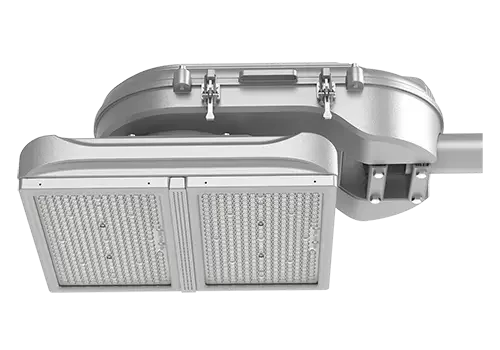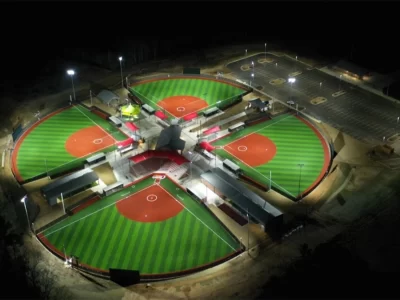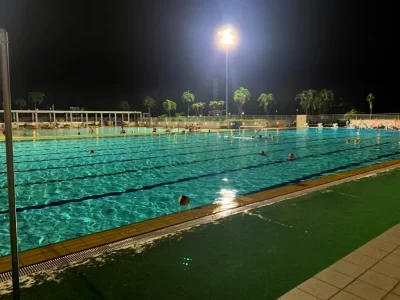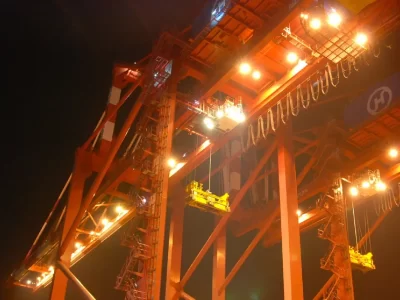PRODUCTS OPTIONS
LED High Mast Lights
Explore our LED High Mast Lights, perfect for extensive outdoor areas. These lights are specifically designed to cater to the needs of large-scale spaces such as airports, highways, ports, and expansive parking lots, where high-quality, uniform illumination is paramount. Our LED High Mast Lights stand out in their ability to provide bright, consistent lighting while significantly cutting down on energy consumption and maintenance costs, making them not only an environmentally friendly option but also a cost-effective solution for large area lighting.
What is LED High Mast Lighting?
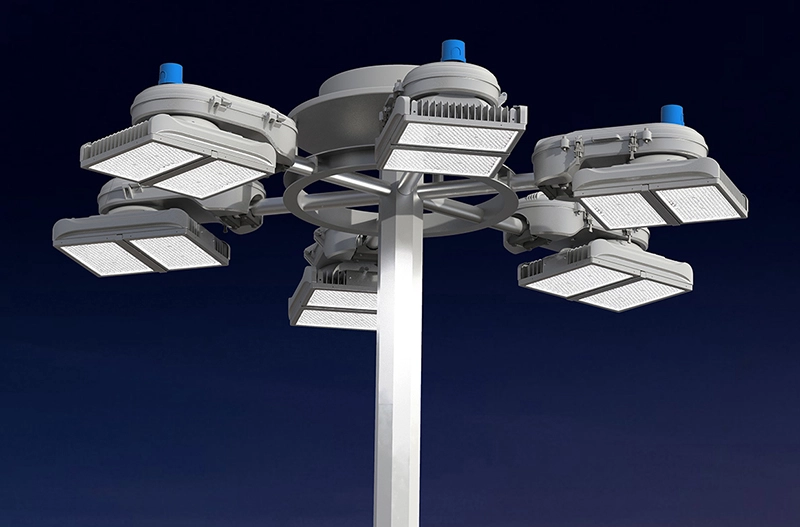
LED high mast lighting is a type of outdoor illumination that is typically used for large-scale areas such as highways, large parking lots, dockyards, stadiums, and other expansive outdoor spaces. These lights are named for their installation style; they are mounted on tall poles, typically ranging from 15 meters (50 feet) to 50 meters (165 feet) in height, which is considerably higher than standard street lights. This height advantage allows for uniform and wide-spread illumination over large areas.
Benefits of LED High Mast Lights

Extensive Coverage
High mast lights are installed on tall poles, usually ranging from 15 to 50 meters in height, which allows them to illuminate large areas effectively. This makes them ideal for airports, parking lots, docks, stadiums, and highways.

Enhanced Safety
The bright and uniform light provided by high mast systems improves visibility significantly. This is particularly important in areas where safety and security are paramount, such as in transportation hubs or large public venues.

Energy Efficiency
When equipped with LED bulbs, high mast lights are highly energy-efficient. LEDs consume significantly less power compared to traditional lighting options like halogen or high-pressure sodium lamps, leading to lower electricity costs.

Longer Lifespan
LEDs have a much longer lifespan than traditional lighting solutions. This reduces the frequency of replacements and cuts down on maintenance costs and efforts.

Durability
High mast lights are designed to be durable and withstand harsh outdoor conditions, including extreme weather, which is essential for consistent performance in exposed environments.

Quick Turn-On and Turn-Off
Unlike some traditional lighting systems that take time to warm up, LED high mast lights turn on and off instantly, providing immediate illumination when needed.

Reduced Operational Costs
With lower energy consumption, longer lifespan, and reduced maintenance needs, high mast LED lights can significantly lower operational costs over time.

Eco-Friendly
LED lights are more environmentally friendly than traditional lighting systems. They don’t contain harmful substances like mercury and produce less heat, reducing their impact on the environment.

Customization and Control
High mast LED lighting systems come with advanced features such as dimming, motion sensors, and programmable controls, allowing for greater customization and further energy savings.
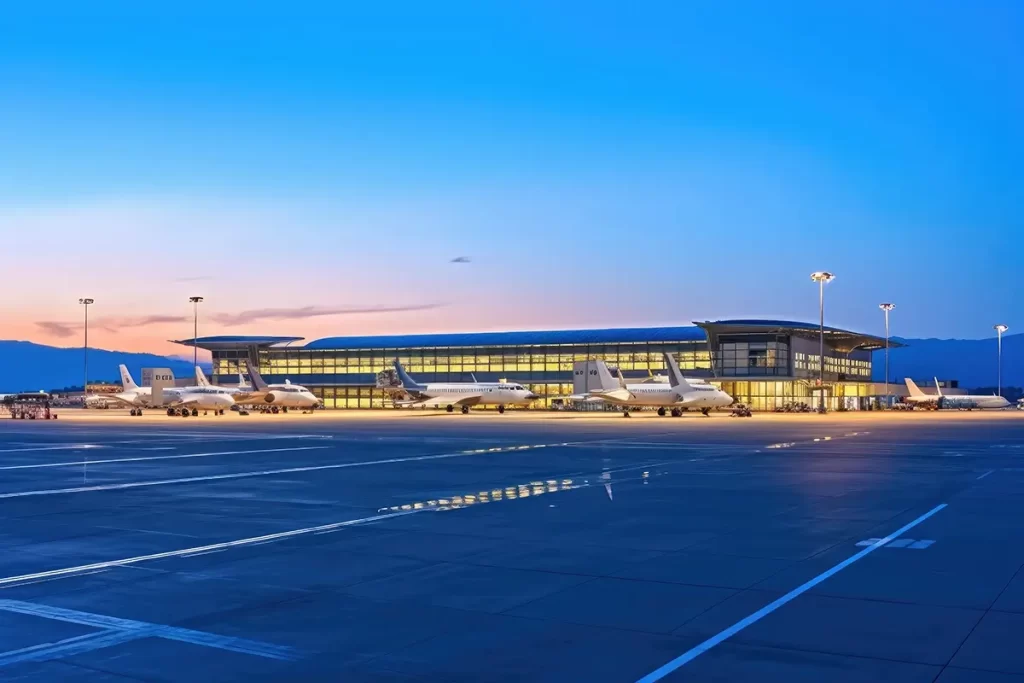
Applications
High mast lighting is an essential solution for brightening large-scale areas, offering unparalleled visibility and safety in settings ranging from highway interchanges to industrial complexes and outdoor event venues. This versatile lighting approach meets the diverse needs of expansive spaces with exceptional efficiency and clarity.
- Highways and Roadways
- Airports
- Ports and Dockyards
- Stadiums and Sports Facilities
- Large Parking Lots
- Public Gathering Areas
- Railway Yards
- Mining Operations
- Recreational Area
- Industrial Sites
Lighting Comparison: High Mast Lighting vs Flood Lighting
High mast lighting and flood lighting are two prevalent types of outdoor lighting systems, each with its unique features and applications. Understanding the differences between them can help in choosing the right lighting solution for a specific need. Here’s a comparison:
High Mast Lighting
- Height: High mast lighting systems typically involve tall poles, ranging from 15 to 50 meters in height, allowing for wide-area illumination from a high vantage point.
- Area Coverage: Due to their height, high mast lights can illuminate large areas, making them suitable for airports, highways, ports, and large public spaces.
- Light Distribution: These systems provide a more uniform distribution of light over a vast area.
- Installation and Maintenance: The installation and maintenance of high mast lighting can be more complex and costly, often requiring specialized equipment such as cranes.
- Energy Efficiency: When equipped with LED lights, high mast systems are very energy-efficient.
- Cost: The initial cost can be higher due to the scale and complexity of the installation, but operational costs are often lower due to the long lifespan and efficiency of LED technology.
Flood Lighting
- Height: Floodlights are typically mounted at lower heights compared to high mast lighting. They are often installed on buildings, poles, or ground stands.
- Area Coverage: Floodlights are designed to illuminate specific areas and are ideal for smaller spaces like sports fields, stages, parking lots, and billboards.
- Light Distribution: These lights provide a concentrated beam, making them suitable for targeting specific points or areas with intense illumination.
- Installation and Maintenance: Generally easier and less expensive to install and maintain compared to high mast lighting.
- Energy Efficiency: LED floodlights are also energy-efficient, though their total energy consumption can vary depending on the scale and number of lights used.
- Cost: Usually more cost-effective in terms of initial setup. They are a common choice for smaller-scale or budget-conscious projects.
Key Differences
- Scale of Illumination: High mast lighting is better for large-scale, wide-area illumination, while flood lighting is more suited for smaller, targeted areas.
- Light Distribution: High mast lighting offers a more uniform light distribution, whereas floodlights provide intense, focused lighting.
- Height of Installation: High mast lights are mounted much higher than floodlights, impacting their area coverage and the type of illumination they provide.
- Applications: High mast is ideal for large, open areas (e.g., highways, large parking lots), while floodlights are often used for sports fields, stages, and focused illumination needs.
In summary, the choice between high mast and flood lighting depends on the specific requirements of the area to be illuminated, including the size of the area, the desired intensity and distribution of light, and budget considerations.
Installation Process Of High Mast Lighting Pole
- Site Assessment: Initially, a thorough assessment of the site is conducted. This includes determining the optimal location for the poles, considering factors like area coverage, existing infrastructure, and potential obstructions.
- Foundation Preparation: A strong foundation is essential for high mast poles. This involves digging a deep hole and pouring concrete to create a stable base. The depth and dimensions of the foundation depend on the height of the pole and local soil conditions.
- Pole Assembly and Wiring: Before erection, the pole is assembled on the ground. This includes fitting electrical wiring, control gear, and sometimes, the lighting fixtures themselves.
- Erection of the Pole: The pole is then lifted into place using cranes. This step must be carefully managed to ensure safety and accuracy.
- Electrical Connection: Once the pole is erected, it is connected to the power source. All electrical connections should be done by qualified electricians to comply with safety standards.
- Light Fixture Installation: If not already done, the light fixtures are then mounted onto the pole. This often requires specialized lifts or cranes.
- Testing: After installation, the entire system is tested to ensure it functions correctly.
Maintenance Process of LED High Mast Light
- Regular Inspections: Regular inspections are crucial to identify any potential issues like wiring problems, rusting, or damage to the fixtures.
- Cleaning: The light fixtures should be cleaned periodically to maintain optimal light output. This includes removing dirt, debris, and any other materials that may have accumulated.
- Bulb Replacement: While LED bulbs have a long lifespan, they do eventually need replacement. This should be done as per the manufacturer’s recommendations or when a reduction in light output is noticed.
- Electrical Maintenance: Regular checks of the electrical components, including wiring and connections, are essential to prevent failures.
- Structural Integrity Checks: The poles should be inspected for structural integrity, especially in areas with extreme weather conditions or high corrosion risk.
- Lubrication of Moving Parts: If the pole has a lowering system for maintenance, ensure that all moving parts are adequately lubricated for smooth operation.
- Safety Compliance: Always ensure that maintenance work complies with local safety regulations and standards.
- Record Keeping: Keep detailed records of all maintenance activities for future reference.
FAQ
How do high mast lights differ from regular street lights?
High mast lights are taller than regular street lights, allowing them to cover a larger area. They are designed for wide-spread illumination, while street lights provide localized illumination along roads and streets.
What are the benefits of using LED bulbs in high mast lights?
LED bulbs in high mast lights offer energy efficiency, longer lifespan, better light quality, reduced maintenance costs, and environmental friendliness compared to traditional lighting systems.
How often do high mast lights need maintenance?
The maintenance frequency depends on the environment and usage, but generally, an annual inspection is recommended. LED bulbs, which have a longer lifespan, reduce the need for frequent maintenance.
Can the height of the high mast poles be adjusted?
Most high mast poles are of fixed height, but some designs incorporate lowering systems that allow the lights to be brought down to ground level for maintenance.
How are high mast lights controlled?
High mast lights can be controlled manually or automatically. Some systems are equipped with smart controls for dimming, motion sensing, and remote operation.
How much area can a single high mast light cover?
This depends on the height of the pole and the design of the light fixtures, but a single high mast light can typically illuminate an area of several thousand square meters.


